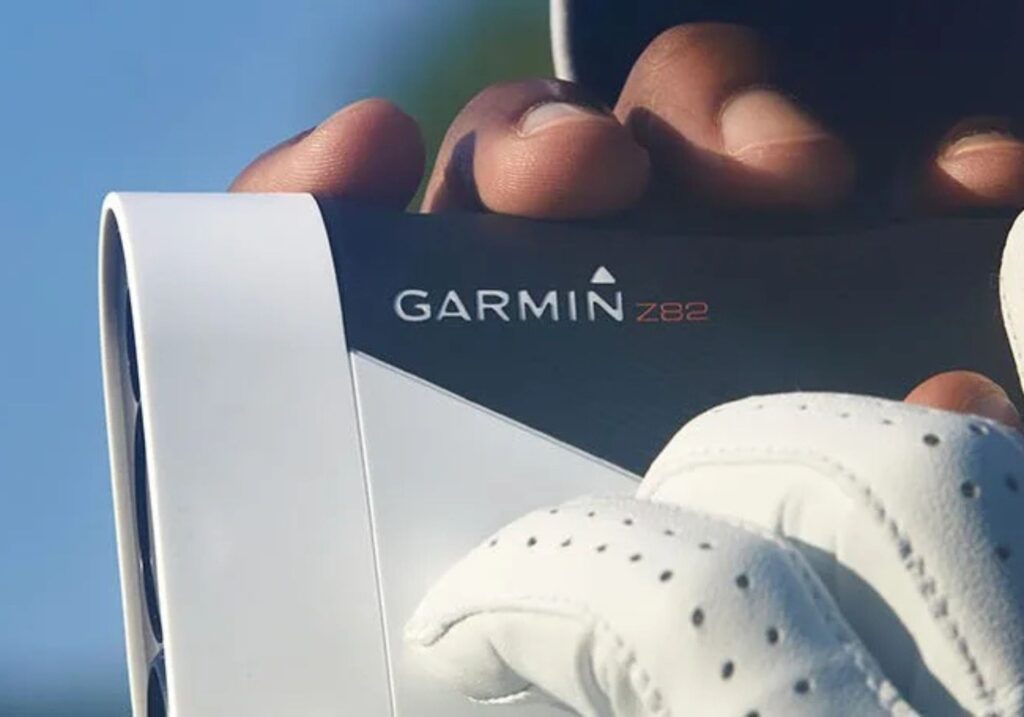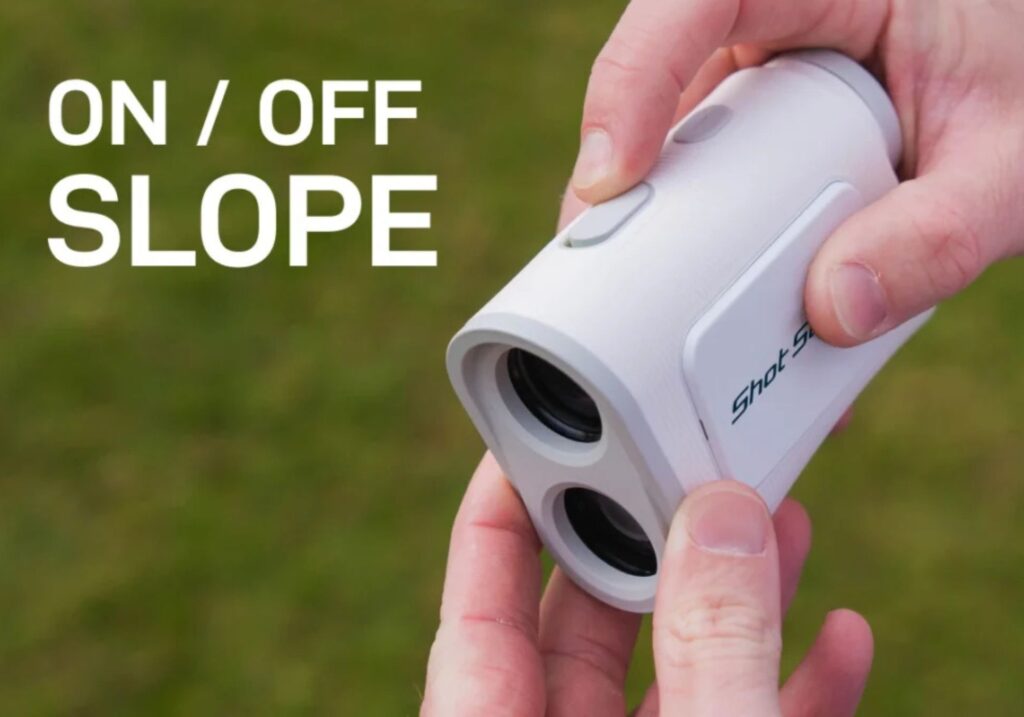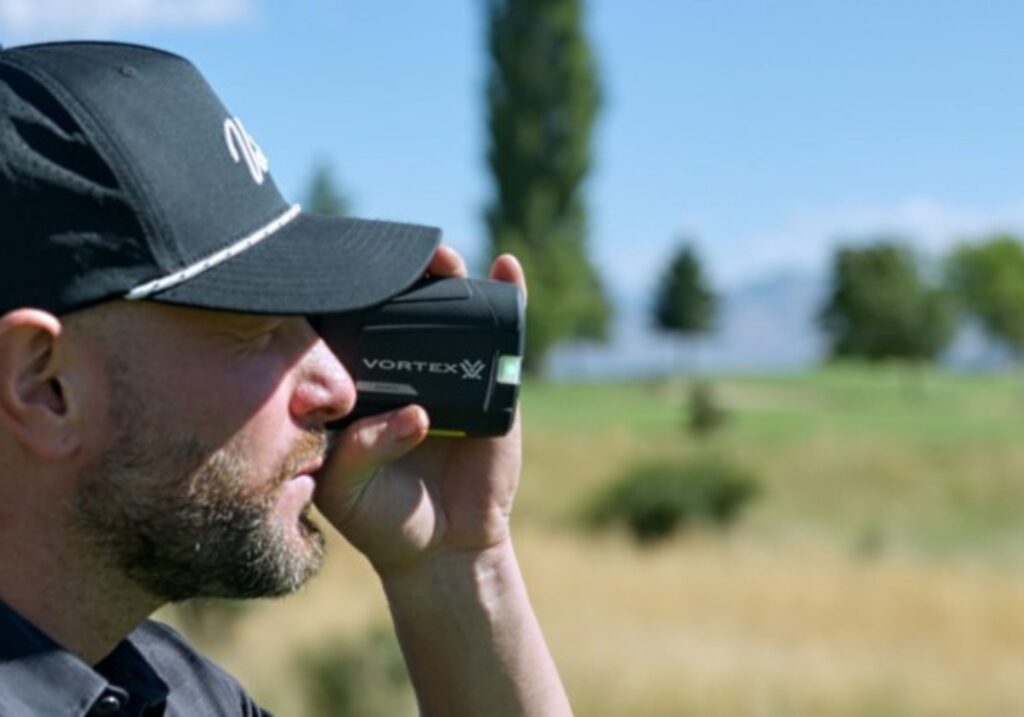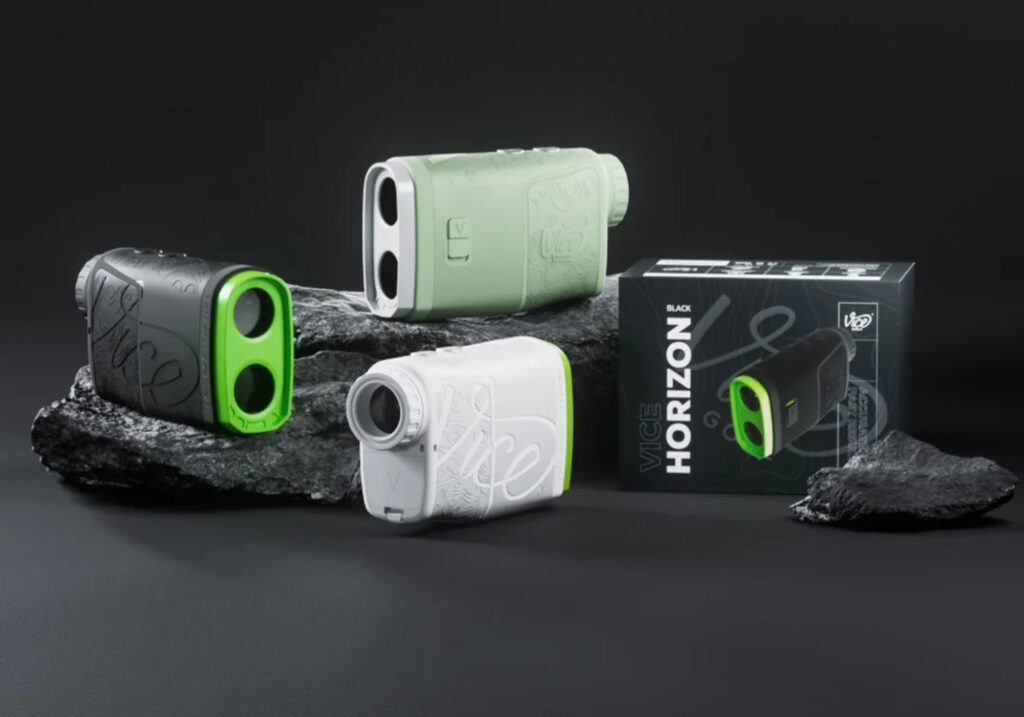Not sure if a rangefinder is worth it?
Let’s start here. If you’ve ever asked yourself any of the following questions, this article is for you:
- How far is it to carry the bunker or reach the back edge of the green?
- Is that 7-iron really going to get me there, or should I club up?
- Why do some golfers always seem so confident standing over their ball?
The answer to all of them often starts with one small device: a rangefinder.

Why you should have a rangefinder
If you’ve ever stood over your ball questioning your club selection or wondering if a hazard is in play, then adding a rangefinder to your bag might be one of the easiest ways to upgrade your game. And it’s not just about the number to the pin.
With a rangefinder, you can shoot the front edge of the green, the lip of a bunker, a carry over water, or a tree you need to stay short of. It’s not just about hitting targets, it’s about having the full picture so you can choose your shot with confidence.
They also help speed up play. Instead of searching for sprinkler heads or pacing off yardages, you just pull it out, shoot your number and hit your shot. That rhythm adds up over 18 holes and your playing partners will appreciate it too.
In practice, they’re just as valuable. Whether you’re working on wedge distances or trying to figure out how far your 5-iron actually flies, a rangefinder gives you instant feedback. Knowing your real yardages leads to smarter choices on the course.
Then when it comes to tournament play, nearly all rangefinders are allowed. You’ll just need to toggle slope mode off before teeing it up in competition.
For players of any level, a rangefinder takes the guesswork out of your game. It helps you play faster, make better decisions and swing with more trust. That’s a win on every level.

Rangefinder do’s and don’ts
A rangefinder is only as helpful as the habits you build around it. Here are some quick tips to get the most out of your device and avoid common mistakes.
Do:
- Be ready before it’s your turn. Have your rangefinder out, shoot your target, and step in. It keeps your group moving and shows awareness.
- Make it part of your pre-shot routine. Just like checking the wind or picking your target line, shooting your yardage should feel automatic.
- Trust the number. If you’ve locked onto the pin, commit to the shot. Doubt leads to bad swings.
- Double-check your target. Especially on crowded backdrops, make sure you’re not picking up a tree behind the green or a cart path down the fairway.
- Clean the lens occasionally. Fog, dirt, or grass splatter can affect how well your rangefinder reads the target.
- Keep a spare battery or charging cable in your bag. You won’t need it often, but when you do, you’ll be glad you had it.
- Use it on the range. Learn your carry distances, gaps between clubs, and ideal numbers for your wedges.
Don’t:
- Don’t leave it behind. Cart roofs, benches and tee boxes are common places they get forgotten. Clip it or stow it right away.
- Don’t use slope mode during tournaments. Even if you’re not looking at the adjusted number, it needs to be disabled for compliance.
- Don’t shoot reflective objects. Polished metal signs, ball washers, or wet carts can bounce signals and give false readings.
- Don’t rush the reading. A shaky hand or quick trigger can lock onto the wrong target.
- Don’t rely on it for everything. Combine it with your course knowledge, instincts, and GPS visuals when needed.

Our favorite rangefinders (and why we like them)
There’s a rangefinder out there for every type of golfer. Whether you want high-tech features or reliable basics, these are our top picks for 2025:
Bushnell Pro X3
Bushnell has long been the industry standard, and the Pro X3 is their flagship. It gives precise distances while accounting for slope, temperature, altitude, and barometric pressure. The opitcs are considered best in class and the magnetic cart mount is strong and secure for security during every round. If you want the best of the best, this should be on your short list.
Garmin Approach Z82
This rangefinder doubles as a GPS system. It overlays hole layouts, hazard distances, green shape, and wind direction right in the viewfinder. It’s perfect for players who want data-driven decisions and it’s great for new courses where local knowledge is limited. Rechargeable and fully loaded. In terms of technology, the Z82 is one of the most jam packed rangefinders on the market.
Vortex Anarch
Built like a tank, the Vortex Anarch is waterproof, shockproof, and protected by a lifetime warranty. It uses high-end optics with a stability mode that is easy on the eyes, even in low light. If you want something rugged with fast, accurate readings, this is a great option and a personal favorite.
Shot Scope PRO X
For under $200, the PRO X brings a lot of value. It offers slope mode, quick lock-on, a bright display, and a magnetic mount. It’s ideal for the golfer who wants solid performance without splurging on premium features. Oh and Shot Scope offers customization options.
Precision Pro NX10 / Titant Elite
Known for user-friendly design, Precision Pro’s NX10 features swappable faceplates and vibration feedback. The slope switch is tournament friendly and they include free lifetime battery replacements, which is a rare bonus. The Titan Elite is a premium option that has a GPS locator function to ensure you never misplace your rangefinder.
Blue Tees Series 3 Max
Stylish, affordable, and packed with features. This model has slope mode, strong vibration lock, and a clean display. It fits right in for mid-handicap players who want a reliable tool that looks good and works well.
Vice Golf Rangefinder
If you already like Vice balls and gear, this rangefinder completes the look. It’s clean, functional, and simple to use. Priced under $200, it offers excellent value and is perfect for players who want a no-nonsense option that gets the job done.

What to consider before buying
There’s no one-size-fits-all when it comes to rangefinders. Here are a few things to think about before you buy:
- Budget. Do you want the top-tier experience or something basic that gets the job done? Great rangefinders exist at every price level.
- Slope mode. Ideal for practice or casual rounds, but it needs to be disabled for tournament play.
- Display clarity. Some use black text, others red optics, which can be easier to read in bright sunlight.
- Size and feel. Some golfers prefer a heavier, more durable unit while others want something light and compact.
- Mounting options. Magnetic mounts are incredibly convenient if you ride in a cart.
- Tech features. Decide if you want wind readings, GPS overlays, or voice feedback. Some players love them, others don’t use them at all.
- Customer service. Brands like Bushnell, Garmin, and Vortex are known for excellent support, while others stand out with added value like battery replacements or customization.
Final thoughts
Rangefinders take the guesswork out of your game. Whether it’s a tucked pin behind a bunker or a dogleg that tempts you to cut the corner, knowing the number gives you the confidence to swing with purpose.
They help you play faster, practice smarter, and build consistency across your bag. And with so many models available at every price point, there’s no reason not to keep one in your bag.
It’s one of the easiest gear upgrades you can make and once you’ve used one for a few rounds, you’ll wonder how you ever played without it.
Your turn
What rangefinder are you using right now and what do you like about it? Still pacing off yardages or relying on GPS? Let us know what’s made a difference in your game.
